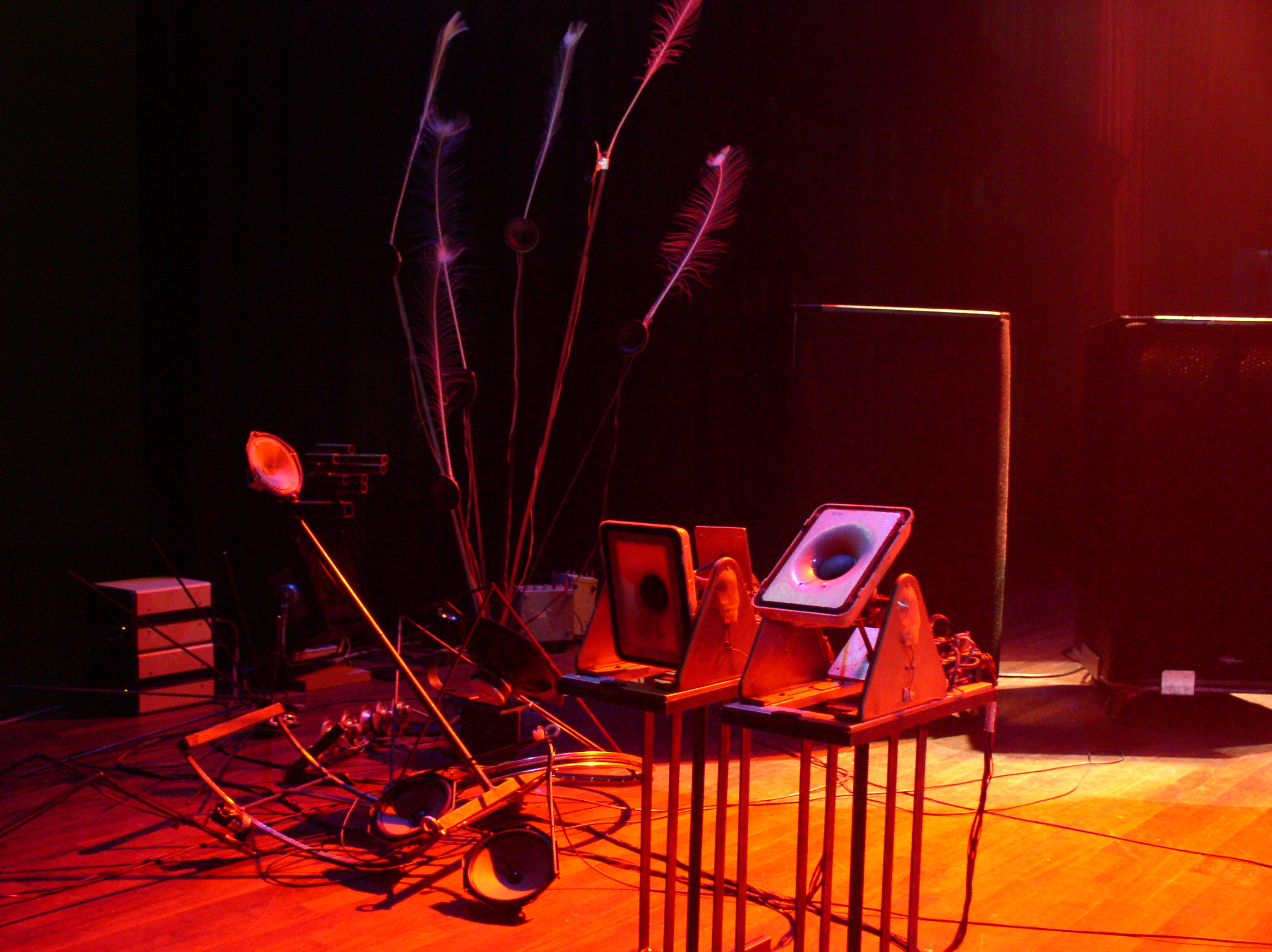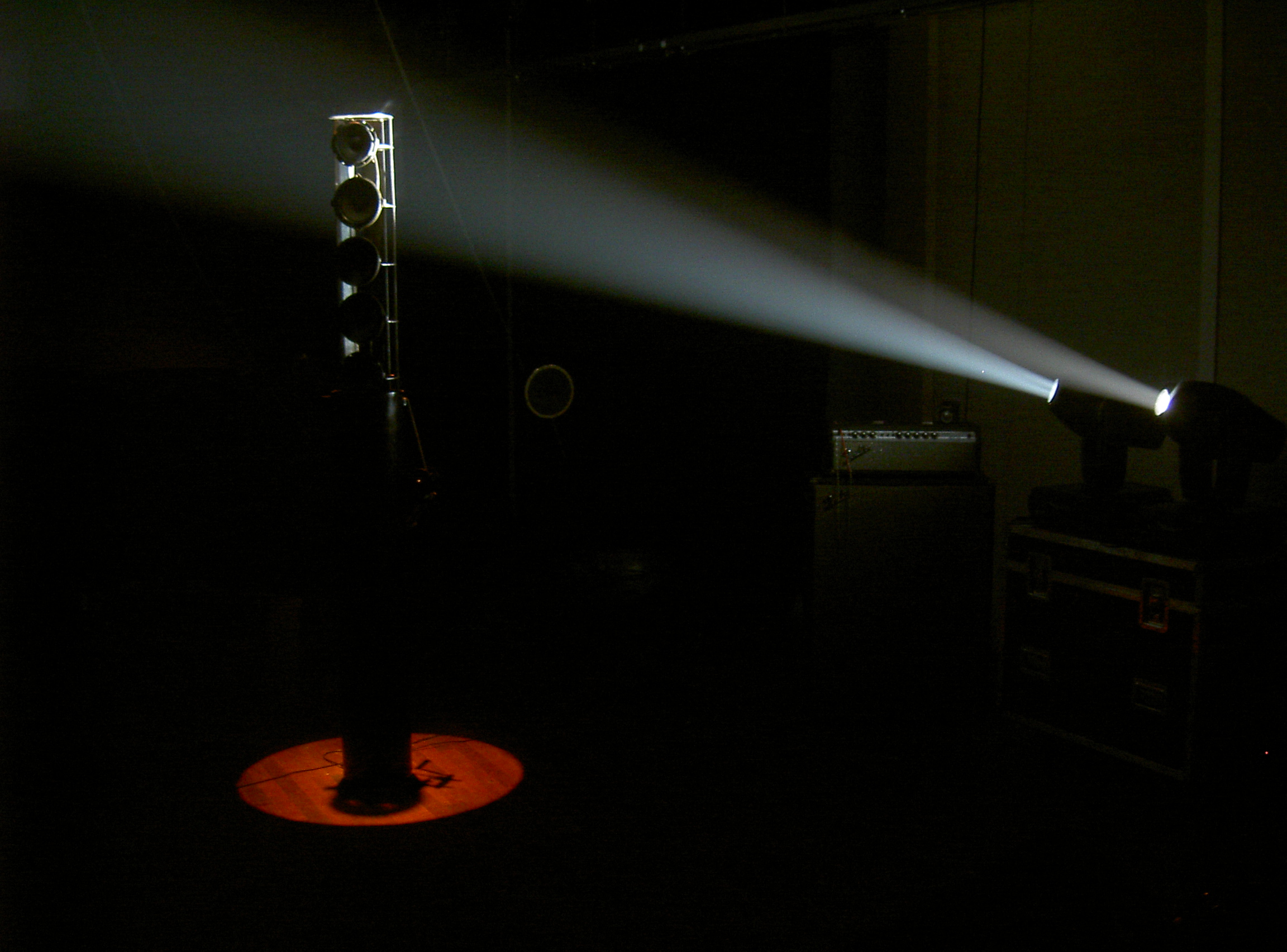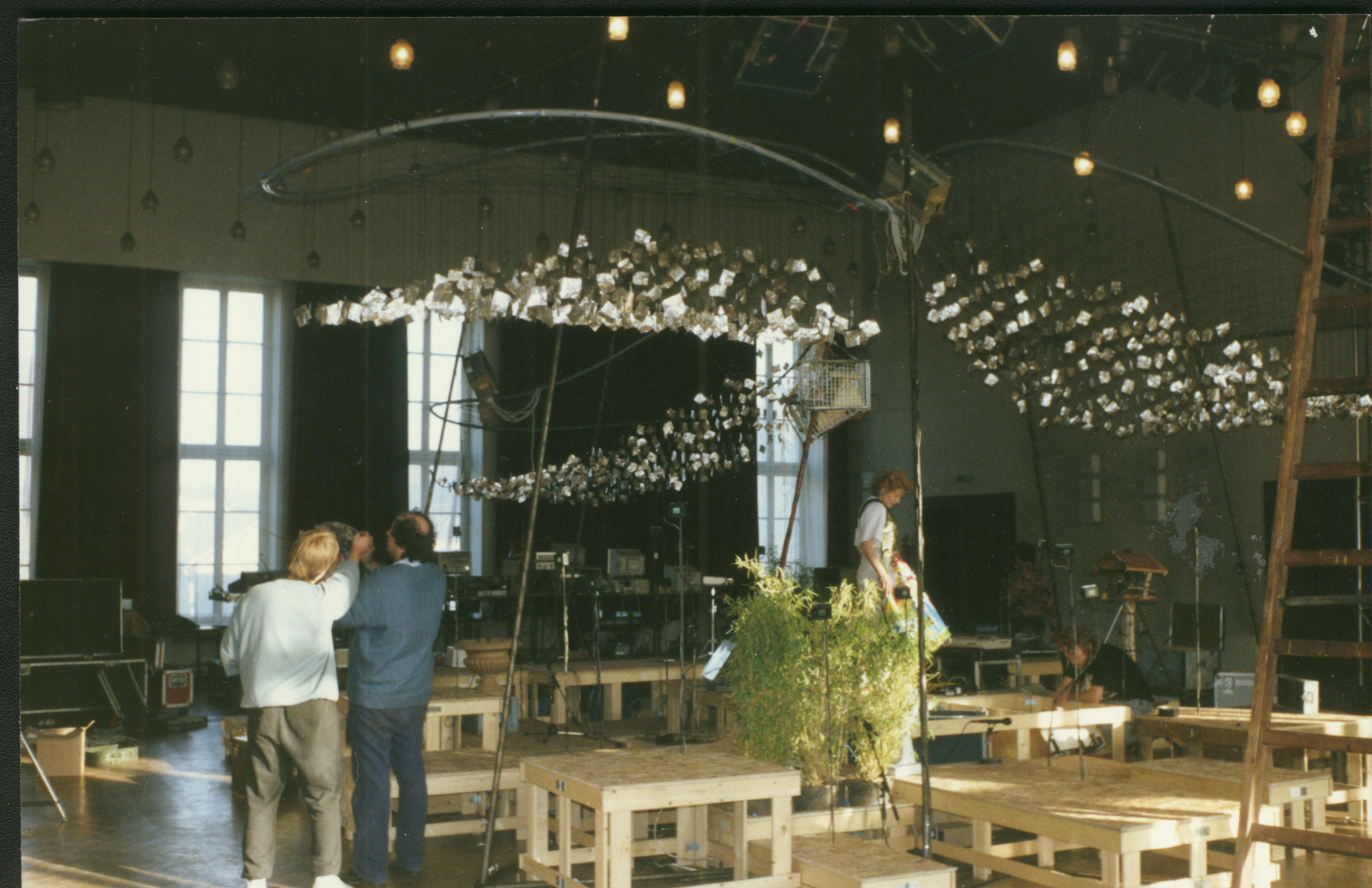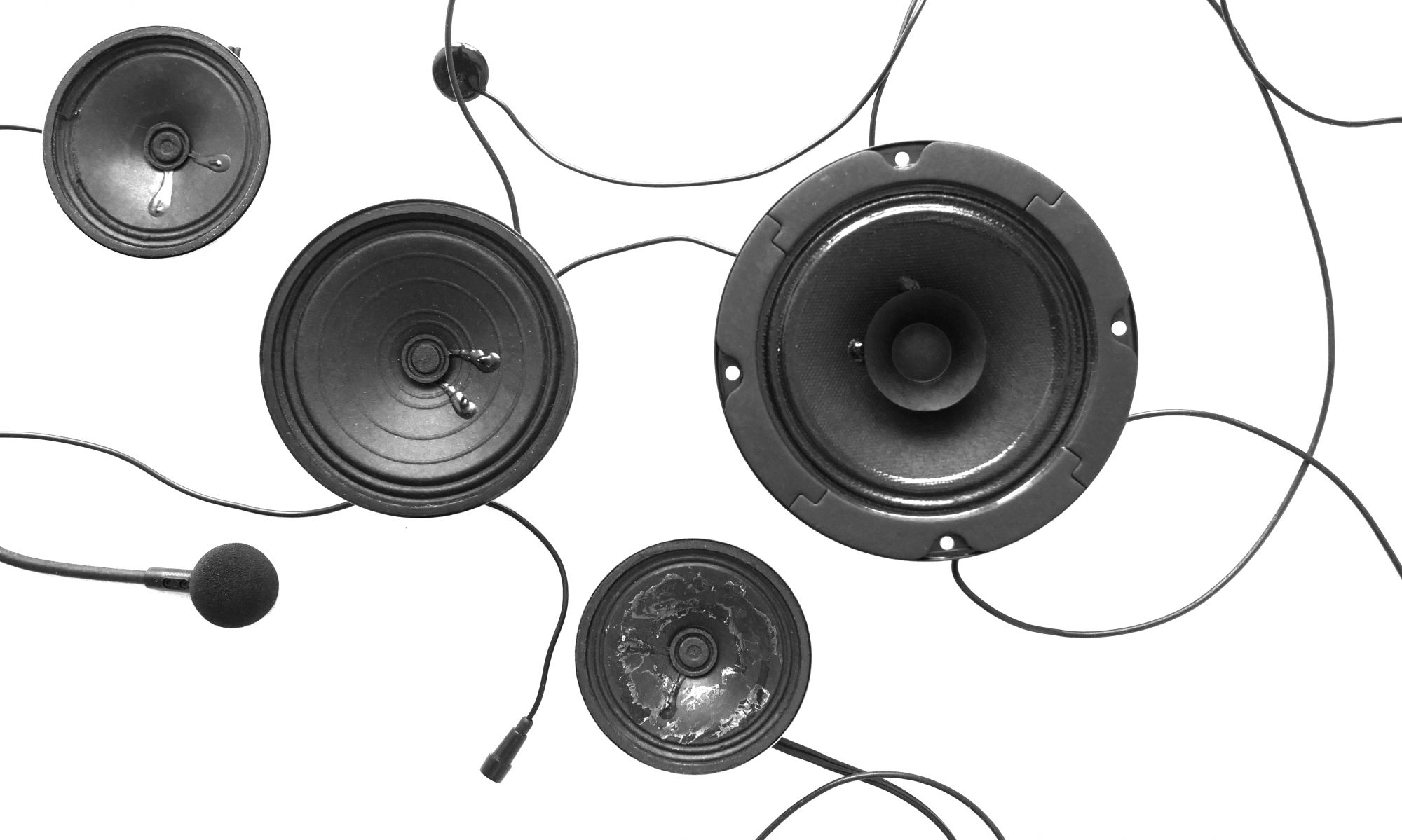
In her opera Lautsprecher Arnolt (2004) Huba de Graaff decided to have most roles played by loudspeakers. Only the main character—the writer, Arnolt Bronnen (1895-1959)—is played by a human actor, Marien Jongewaard. Arnolt himself is literally a “loud speaker”, screaming and provoking the kinetic loudspeaker sculptures. Arnolt often changes his political opinions during his life, depending on what seems to be the most advantageous at the time, similar to how loudspeakers can reproduce all kinds of sounds and do not have to choose one direction. The loudspeaker sculptures in their turn are all humanised. They are constructed by Bart Visser and can often move and play the characters of, for example, Bertolt Brecht (a very long, thin, and vibrating loudspeaker), Joseph Goebbels (a long column of loudspeakers, which can grow higher and shorter) and Arnolt Bronnen’s wife, Olga Förster-Prowe (two loudspeakers in the form of a bra). The piece is set during the first half of the twentieth century. During that time, the loudspeaker was developed and became suitable for mass communication and soon after was used in Nazi Germany for dissemination of propaganda.


As Huba explains in her text about loudspeakers and sound systems, she considers the loudspeaker as the real instrument of electronic music. For this reason, it is essential for her that loudspeakers become moving objects on stage. In this way, a physical connection between sound and movement is created and the speakers become a sound source that moves when it sounds (similar to instrumentalists playing their instrument). A typical example of such moving loudspeakers are the so-called AATs, an abbreviation of Addressable Audio Transducers. These are rotating loudspeakers derived from Leslie loudspeaker cabinets produced by Yamaha. Huba transformed them in such a way that their movements are controllable by MIDI. Here, they speak in German on loudspeakers as instruments:
Except for the often historic voice recordings and some texts by the director of the piece Erik-Ward Geerlings, most of the sounds diffused through the loudspeakers are sounds which cannot exist without loudspeakers: sine waves, all kinds of other synthesised sounds, the Hammond organ, the electric guitar, but also the characteristic (mostly unwished for) hum of sound amplification systems and, of course, acoustic feedback.
Huba de Graaff composed several other works with loudspeakers. One of them is the opera Hephaistos (1997), for 40 loudspeakers, robotspeakers, computer-controlled moving loudspeakers, three singers, and computers. Also, in this opera, the loudspeakers are part of the scenery and costumes; for example, the singers are wearing loudspeaker hats.

An earlier piece is Corenicken (1990). Although not called opera, this is again a large-scale work, using many different sound sources and performed by Huba on violin and a percussion player. The audience is surrounded by all kinds of loudspeakers and also visual media such as small televisions. Huba herself wears her “Japon Fuzz”, a tin dress containing electronic equipment, so it can create “fuzzy” and feedback sounds in response to her movements. The piezo disks attached to the dress (see the second picture of the dress) pick up the sound of the dress. As soon as Huba approaches a loudspeaker, her amplified tin dress feedbacks with the loudspeaker:


There are also two rotating loudspeakers (similar to the AATs mentioned above) on stage and an enormous amount of piezo ceramic elements hangs above the audience. Together, they form three grids, each containing 256 piezo disks (a total of 768!). Huba developed computer software to control pulse-trains sent to these disks, resulting in moving soundscapes. Every piezo disk is prepared with a piece of thick aluminium foil, so it diffuses its sound louder. Wonderful clouds of small sounds move above the audience:

Huba considers stereophonic sound, such as that used in HiFi-systems for the living room or in concert hall amplification, to be a strange and flat reproduction of reality. Sound loses its depth and perspective when reproduced by such systems. A common P.A. system (a public address system used for sound amplification in all kinds of situations, such as concert halls, theatres, and stadiums) creates distance between the audience and the creators. In works such as Corenicken, Huba looks for a what she calls an I.A. system (individual address), as opposed to the common P.A. system. Every audience member is surrounded in a different way by loudspeakers. And indeed each of her imaginative loudspeaker sculptures diffuses its sound in an individual way.
Huba is currently working on a new piece for the AAT loudspeakers, which will be premiered soon. I’ll keep you posted.
